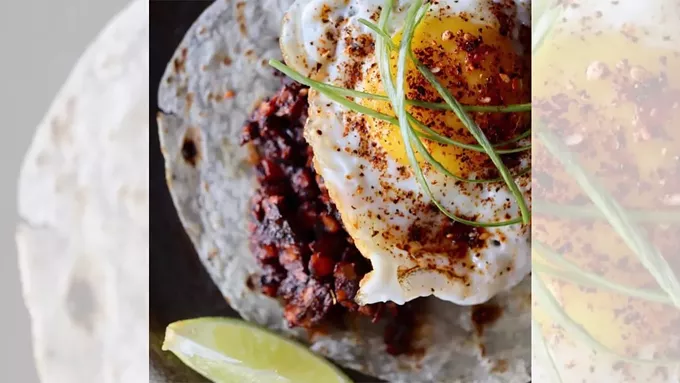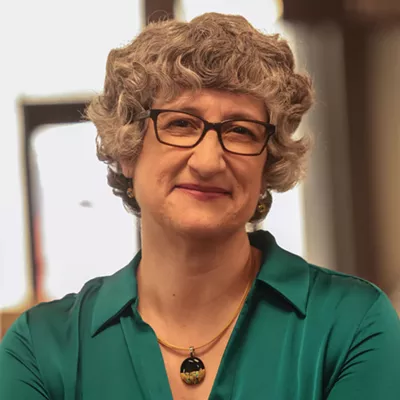
When Feng-Feng Yeh started the Tucson Chinese Chorizo Festival last year, she wanted to highlight the solidarity of Chinese and Mexican immigrants in Tucson from the early 1900s to the 1970s.
More than 40 restaurants, food vendors and organizations in Phoenix and Tucson will participate in the festival from Sunday, Oct. 1, to Sunday, Oct. 29.
This year, it is expanding with more events in Tucson and a presence in Phoenix restaurants and at the Asian Chamber of Commerce Night Market at Desert Diamond Casino West Valley.
“The aim of the project is to talk about community solidarity, to talk about different communities coming together to build something great against adversity, so I think it only makes sense to bring Tucson and Phoenix together,” Yeh said.
A fusion food created by immigrant groups in the Sonoran desert from the 1880s to 1960s, Chinese chorizo is ground pork flavored with spices designed to appeal to Mexican clientele and sold by Chinese grocers.
It’s not just for festivalgoers; 1,200 pounds of chorizo will be donated to restaurants and food vendors participating in the festival.
Each restaurant or vendor will receive 15 pounds of vegan mushroom-based and 15 pounds of pork-based chorizo to create recipes, to be sold at restaurants or at festivals during specific dates in October.
They will keep the proceeds and be promoted during the event.
Yeh said last year the restaurants and vendors came up with creative ways to incorporate the chorizo. Chefs created tamal rice cake, banh mi and fried rice recipes with the chorizo.
“I was really blown away by the creativity that happened. I really think that the chorizo is so versatile,” Yeh said. “It just sparked a lot of cool culinary innovation that I wasn’t expecting to see. I think chefs were excited to play with something that they don’t normally play around with.”
Throughout the month, foodies get a chance to visit different restaurants, experiencing what they have to offer.
“I’m trying to partner with businesses that are local and bring attention to them, bring this festival to these restaurants,” Yeh said.
“That’s why it’s not a traditional festival. ... It’s at these different locations so you can go to these different locations and experience getting to know them, saying, ‘Hi,’ feeling what the ambiance of a place is, seeing what they have to offer and looking at their menu. You get to be integrated fully into these businesses and have that intimate relationship with people.”
Yeh said last year that a lot of festivalgoers ventured to restaurants they had never been and discovered new spots.
Many attendees were interested in learning about the history and the food.
“Many people that I didn’t know before, young and old, they reached out to me and said, ‘Oh, my God. I’m part Chinese and part Mexican. You're telling my story,'" Yeh said. "Or ‘I grew up in those Chinese grocery stores, and I can’t believe you are telling this story.’ I think it’s really nice to be able to talk about something that hasn’t been talked about. The ultimate goal of it is to make people feel seen.”
History of Chinese chorizo
Yeh learned about Chinese chorizo and started making connections with her own upbringing.
“I realized how alienated I had felt growing up here,” she said.
“I was one of the few Asians who was living here at the time. Because I was a chef, that story of the Chinese chorizo really resonated. I thought it was so beautiful the way the story was told, how the Chinese chorizo was this fusion food that was scraps of meat that were destinated for the trash, and they were revived with Mexican spices and red wine and turned into something very desirable.
“I thought that was such a beautiful metaphor for the Chinese immigrant experience.”
With the festival, she hopes to highlight Chinese chorizo, as well as share the history of Chinese and Mexican immigrants in Tucson.
Both groups faced racism and xenophobia, not just in Tucson but around the state and country.
The U.S. government enacted exclusionary legislation such as the Page Act of 1875, the 1882 Chinese Exclusion Act and the 1892 Geary Act.
The Mexican and Chinese immigrant communities helped and supported each other during this time.
“It was after they built the railroads and built the infrastructure of America that they were told to leave,” Yeh said.
“There was a lot of violence against Chinese immigrants. This was during the turn of the century in the early 1900s. In California, where there was a bigger population of Chinese immigrants, they were being lynched. They were being cornered into neighborhoods that eventually turned into Chinatowns, and those neighborhoods were also burned down. There was a lot of violence.
“I thought it was interesting that a lot of them came down to Tucson to do mining and railroad work and to also seek refuge from that violence there. Of course, there was racism here, too, but they experienced it less because there were less Asians here.
“All of these things made having a home for Chinese immigrants very difficult, because they couldn’t bring over their family. They couldn’t bring over their wives. And you had to be a certain class. You had to be part of the merchant class. It was really nice to hear that those who did come to Tucson were taken care of, because they worked alongside the Mexican community and became part of that community. It became this beautiful amalgamation of communities that didn’t exist before.”
Yeh said in 1950, there were more than 110 Chinese grocery stores in Tucson. These stores were central hubs in the community and offered foods and ingredients for different communities.
Yeh said with the festival she wanted to highlight the role these grocery stores had in Tucson.
“Every day, you would go to a Chinese grocery store,” Yeh said.
“Quite often, the people who worked there also lived there, and their families were working inside there. I’ve connected with some people who grew up in these grocery stores, and they told me as kids they were selling things. They learned how to count cash and change. They lived in the back of the store. They knew everyone in town. It was this very intimate relationship you had to get your daily necessities.”
Festival events
In Tucson, the festival will kick off on Sunday, Oct. 1, with the Gastronomic Union of Tucson’s Autumn Harvest Carnival.
There will be Chinese chorizo food options, prepared in collaboration with Barrio Bread, during MOCA Tucson’s Chorizo dancehall-themed fall fundraiser on Friday, Oct. 6.
Three food vendors will be out at the Tucson Museum of Art’s Second SundAZe on Sunday, Oct. 8.
As part of a new Southwest art exhibit, the museum will have a multilingual recipe video on Chinese chorizo, available to view through a QR code. The video will be in Spanish, English and Mandarin and will be located next to a featured piece called “Cocina Jaiteca” by Larry Yanez.
Yeh will take part in the Activism in Motion talk/workshop at the Center for Creative Photography on Saturday, Oct. 14. She will discuss sensuality as a form of activism and resistance and take part in a sensual tasting experience.
The festivities close out on Saturday, Oct. 28, with an “American Horror Story” dance party hosted by Queer AF at the Owls Club. During the event, there will be a curated food graveyard with vendors offering samples of, and full, Chinese chorizo dishes.
At 5 Points Restaurant and Market in Tucson, locals can purchase Chinese chorizo in bulk to take home and create their own dishes.
Chinese Chorizo Festival
WHEN: Various times Sunday, Oct. 1, to Sunday, Oct. 29
WHERE: Various locations in Tucson and Phoenix
COST: Prices vary from restaurant to restaurant and event to event
INFO:
chinesechorizoproject.com










